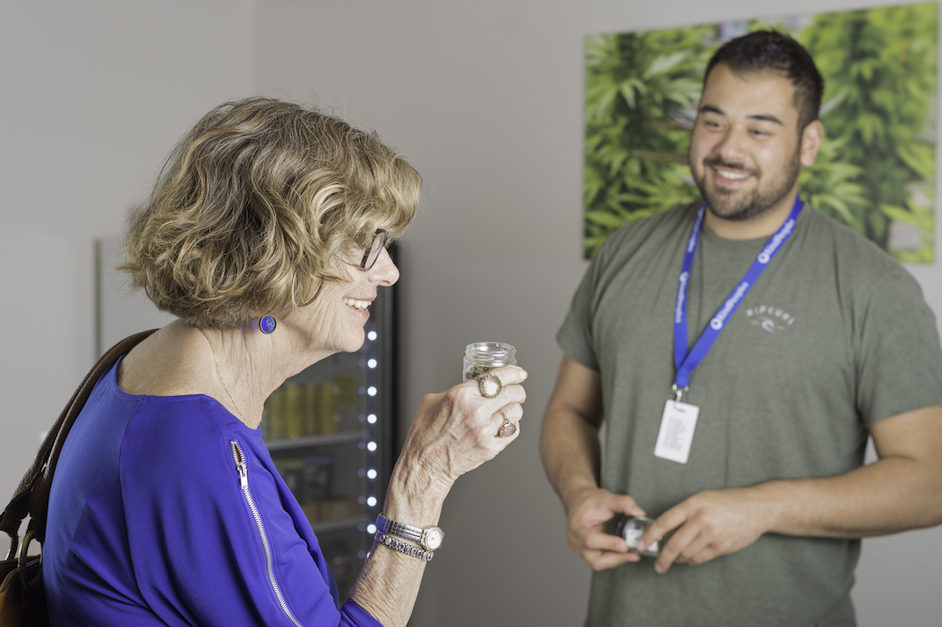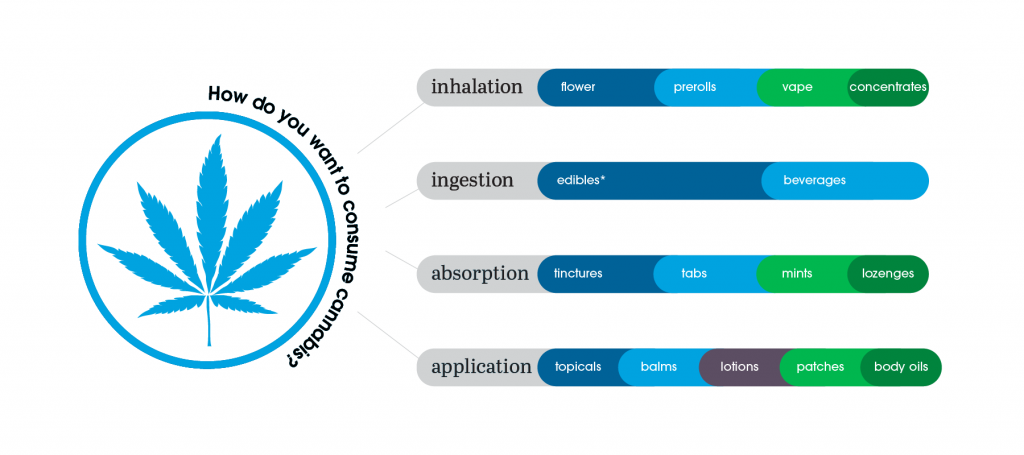
Cannabis 101
Cannabis is a flowering herb that has been cultivated by humans for millennia. It is highly versatile and has both medicinal and industrial uses. Cannabis has been used to make a number of products, including: textiles, oil, food, paper, cosmetics, building materials. A medicinal herb, cannabis was first listed in the U.S. Pharmacopoeia in 1851.
There are three types of cannabis – sativa, indica and ruderalis. Hemp is cannabis, but in the United States, is legally defined as having 0.3% THC or less.
The cannabis you find at a California licensed dispensary is supplied by cultivators and manufacturers authorized to grow and use non-hemp cannabis. All products are lab-tested and packaged according to state regulations.
Ways to consume cannabis
There are various ways to experience cannabis, from smoking to eating. Each method has its own benefits. The following is a review of the various ways to consume cannabis.
Inhalation: Smoking or vaporizing flower and concentrates will generally have a fast onset with a strong peak. Effects will then decline in strength.
Ingestion: Orally consuming edibles and beverages will result in a more delayed and drawn-out effect. The effect will gradually decline in strength and last longer than smoking or vaping.
Absorption: Sublinguals are edibles that you keep under your tongue. They will generate a slightly different effect than if you eat a cookie, for example. Effects will come on a bit quicker than a traditional edible and gradually decline.
Application: Topicals are soothing, without the psychoactive effects. Some people report a slight “high” feeling when using suppositories, transdermal patches and bath products.
Once you decide on a consumption method, you can find out more about the individual products: flower, vape, concentrates, edibles and topicals.

*Edibles include chocolate, mints, gummies, capsules, cookies, crackers, tea
